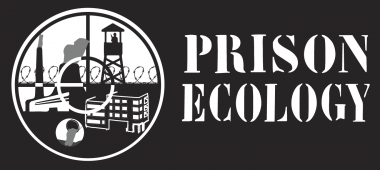The EPA has never cited the health and safety of prisoners exposed to such environmental conditions as a factor in prison inspections or in the permitting of new facilities.
PRESS RELEASE
by Human Rights Defense Center
July 14, 2015
Washington, D.C. – The Human Rights Defense Center (HRDC) submitted a public comment to the Environmental Protection Agency today that provides input on the agency’s EJ 2020 Action Agenda Framework, highlighting the lack of consideration for environmental justice among the millions of prisoners in the United States. The comment was co-signed by 93 social justice, environmental and prisoners’ rights organizations from across the country.
“It’s encouraging to see the EPA attempting to increase the effectiveness of protecting vulnerable communities that have been overburdened by industrial pollution, but a significant component is missing when impacts on millions of prisoners and their families are ignored,” said Panagioti Tsolkas, coordinator of HRDC’s Prison Ecology Project.
HRDC’s comment elaborates on examples nationwide which illustrate a clear need to protect prisoners as a population that faces extreme environmental justice impacts. For example, prisons and jails built on or near landfills, toxic waste dumps, Superfund cleanup sites and coal mining sites, or that are vulnerable to natural disasters such as flooding and environmental hazards like contaminated water.The comment filed with the EPA can be found online here.
According to the comment submitted by HRDC, there is overwhelming evidence that the population of people in prison represents one of the most vulnerable and uniquely-overburdened demographics in our nation. The comment notes that prison populations are almost entirely low-income and that black, Hispanic/Latino and Native Americans are consistently overrepresented in every one of the 50 states.
Environmental permits which fail to meet the environmental justice standards set in place 20 years ago may violate the Civil Rights Act. Title VI of the Act explicitly prohibits discrimination by government agencies that receive federal funds; if an agency is found in violation of Title VI, that agency may lose its federal funding. The prison sector should not be an exception.
“Those unfamiliar with the conditions in America’s prisons may balk at our allegations but the EPA cannot claim to be among the uninformed,” Tsolkas stated.
On February 5, 2015, Tsolkas conducted an interview with an EPA representative from Region III who explicitly stated that environmental justice guidelines have not been applied to prisoners for the purpose of permitting under the National Environmental Policy Act because the EPA uses data that fails to take prisoner populations into account.
EPA Region III, which encompasses the Mid-Atlantic, conducted an initiative in which numerous prison inspections by the agency resulted in enforcement actions between 1999 and 2011, ranging from issues surrounding the disposal of hazardous waste to violations of air and water standards, primarily due to prison overcrowding. The Department of Justice’s Office of the Inspector General has also cited various violations of health, safety and environmental laws, regulations and Bureau of Prisons policies specifically related to industrial operations within federal prisons.
Yet the EPA has never cited the health and safety of prisoners exposed to such environmental conditions as a factor in prison inspections or in the permitting of new facilities.
“Ironically, prisoners are frequently counted for the purpose of gerrymandering voting districts,” observed HRDC executive director Paul Wright. “So why are we missing the mark in terms of environmental protections for those forced to live inside toxic prisons, such as facilities built on coal mining sites or waste dumps?”
_____________________________
About HRDC:
The Human Rights Defense Center, founded in 1990, is a non-profit organization dedicated to protecting human rights in U.S. detention facilities. HRDC publishes Prison Legal News (PLN), a monthly magazine that includes reports, reviews and analysis of court rulings and news related to prisoners’ rights and criminal justice issues. PLN has around 9,000 subscribers nationwide and operates a website (www.prisonlegalnews.org) that includes a comprehensive database of prison and jail-related articles, news reports, court rulings, verdicts, settlements and related documents.
About the Prison Ecology Project:
Over the past six months HRDC’s Prison Ecology Project has been conducting extensive research, public records requests, interviews and reviews of Environmental Impact Statements and Environmental Assessments to understand how environmental justice criteria has been applied to prisoner populations, and how criminal justice and environmental issues intersect.
For further information, contact:
Panagioti Tsolkas
Prison Ecology Project Coordinator
Human Rights Defense Center
ptsolkas@prisonlegalnews.org


